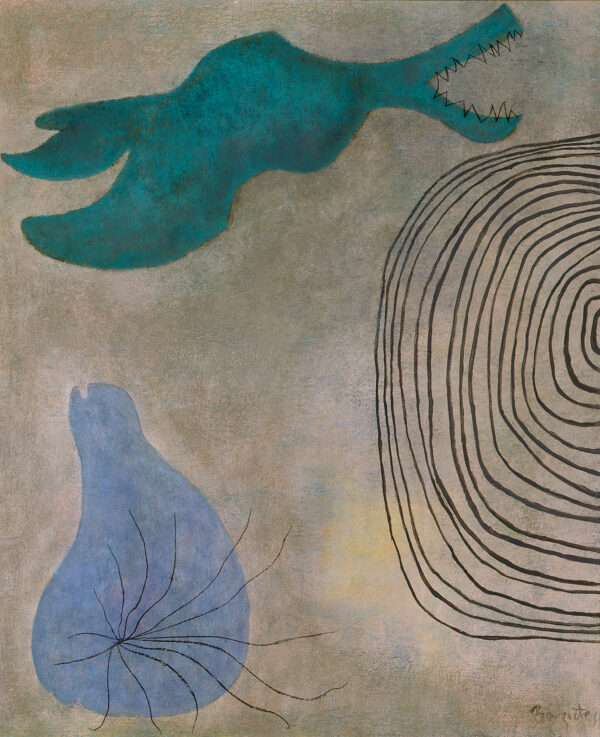
Whirlpool
Baziotes, William A.
1953
Artwork Information
-
Title:
Whirlpool
-
Artist:
Baziotes, William A.
-
Artist Bio:
American, 1912–1963
-
Date:
1953
-
Medium:
Oil on canvas
-
Dimensions:
24 1/8 x 20 1/8 inches
-
Credit Line:
Wichita Art Museum, Museum purchase, Friends of the Wichita Art Museum
-
Object Number:
1982.11
-
Display:
Not Currently on Display
About the Artwork
William Baziotes, a member of the mid-twentieth New York School, found particular inspiration in the theories of the surrealist movement that European and Latin émigrés began to introduce into the United States in the 1930s and 1940s. Closely associated with the Chilean surrealist artist Roberto Matta who employed the technique of automatic marking and English surrealist Gordon Onslow-Ford who specialized in dreamscape imagery of an aquatic nature, Baziotes adopted an intuitive approach to both painting techniques and the formulation of imagery.
Baziotes, like Jackson Pollock and Adolph Gottlieb, initially experimented with the idea of pictographs, primitive signs and free style marking or drawing that might conjure up a sense of kinship with the elemental workings of the imagination. However, in the 1950s Baziotes evolved his own particular vocabulary of biomorphic forms, a style of imagery apparent in Whirlpool that characterized his work in the 1950s up to his premature death in 1964. Two organic forms, one a bright teal arthropod or fish-like creature distinguished by what appears to be an open mouth edged by a crudely drawn line of teeth, and the other a pale blue bulbous protozoan body with sinuous tendrils, float in a nameless fluid matter of delicately layered color and lit from below by a mysterious yellow-green glow. The two primitive shapes might be imagined to be drifting toward a third identifiable shape in the color field, a ripple pattern of concentric lines hovering tremulously at the edge of the picture frame. The latter may represent the vortex of the title, irresistibly pulling the two biomorphic shapes into its dominion.
Whirlpool pulls the viewer into its magnetic meditative sphere of influence by means of the open spatial field’s subtle strata of color and finely grained texture, some layers almost iridescent, others neutral and muted, that Baziotes patiently lade down using a dry scumbling technique. Nothing appears permanently fixed in a Baziotes image; all the forms may be dreaming their own potential, hinting that imagination’s origins are yet in progress.